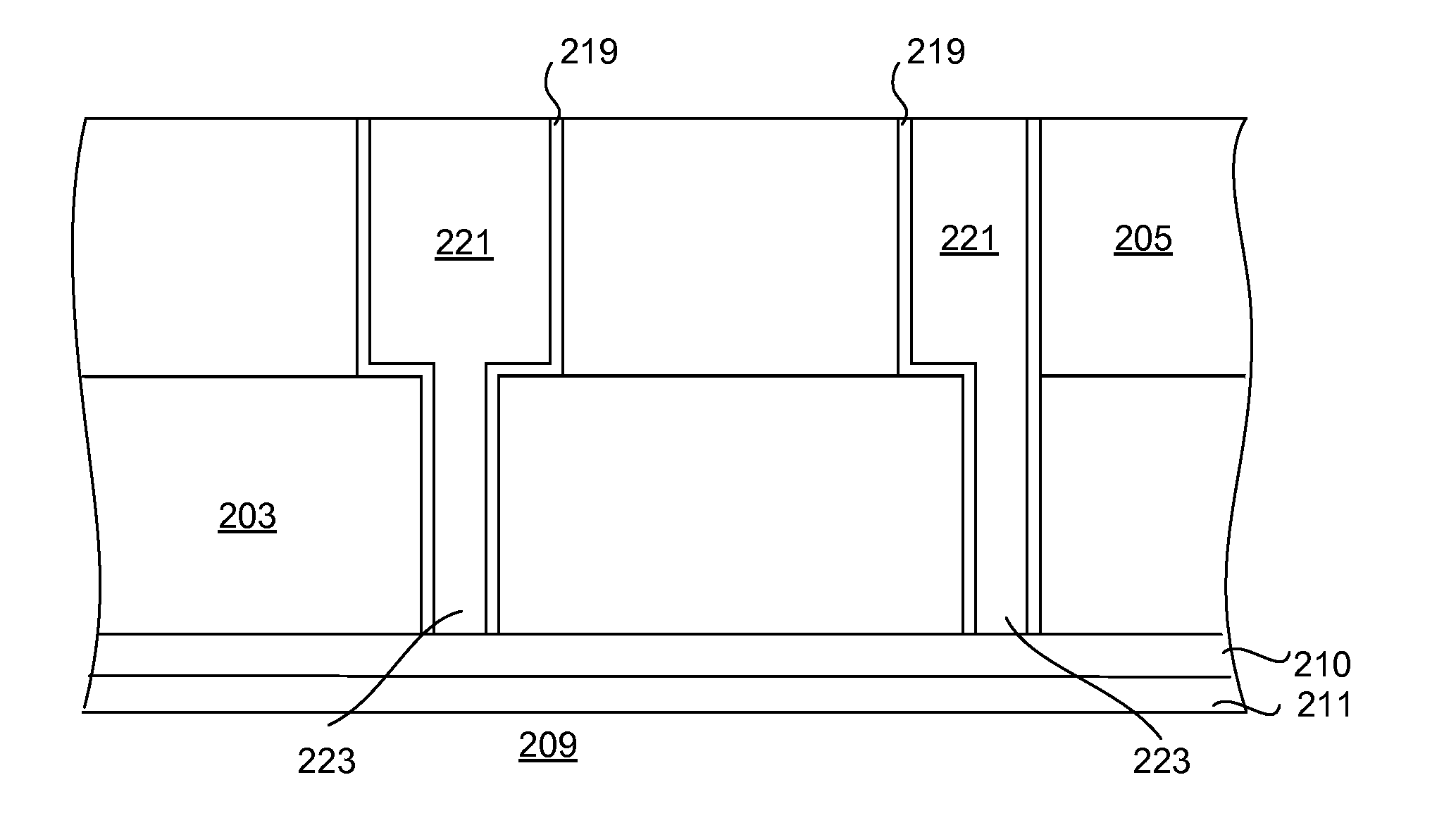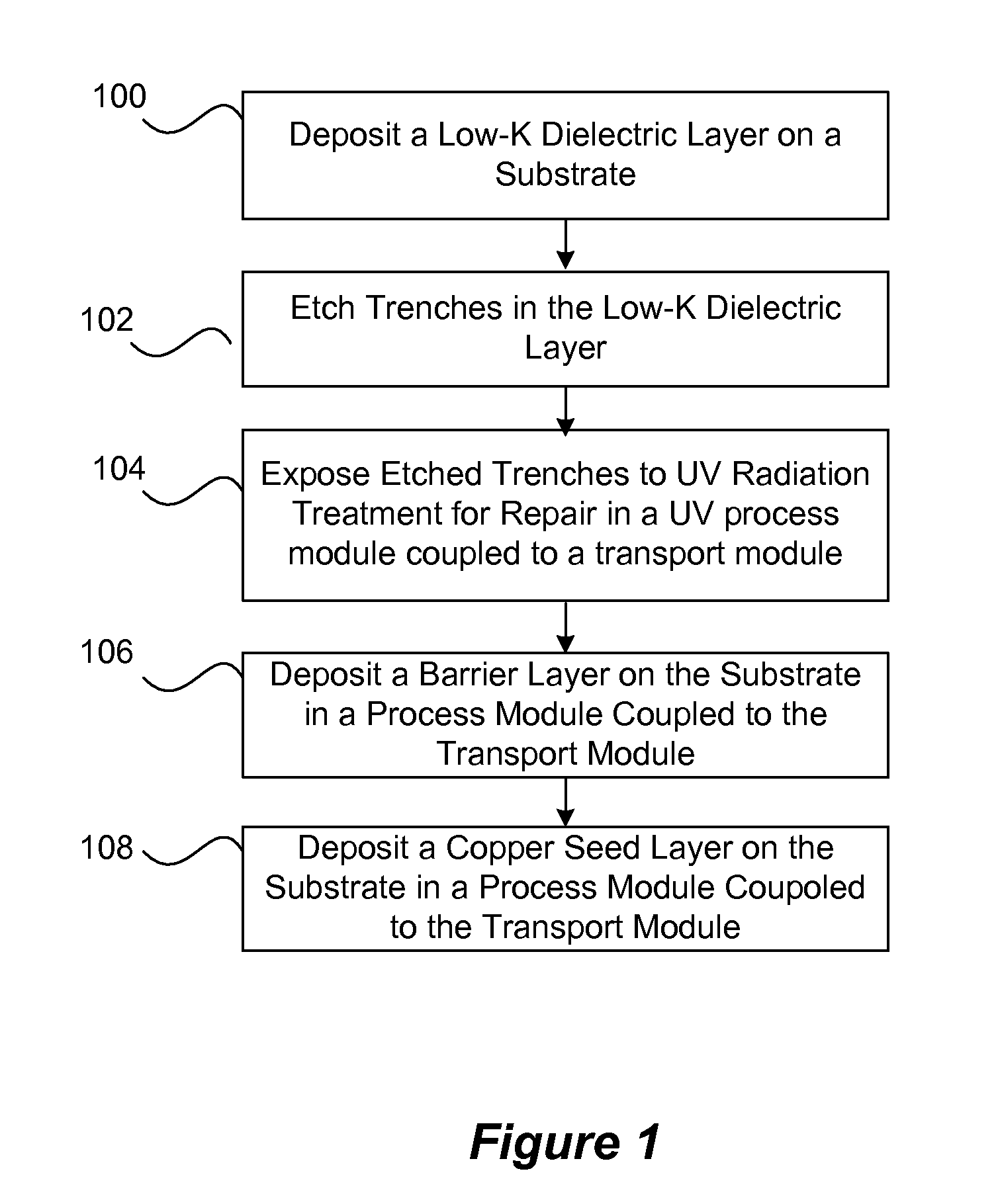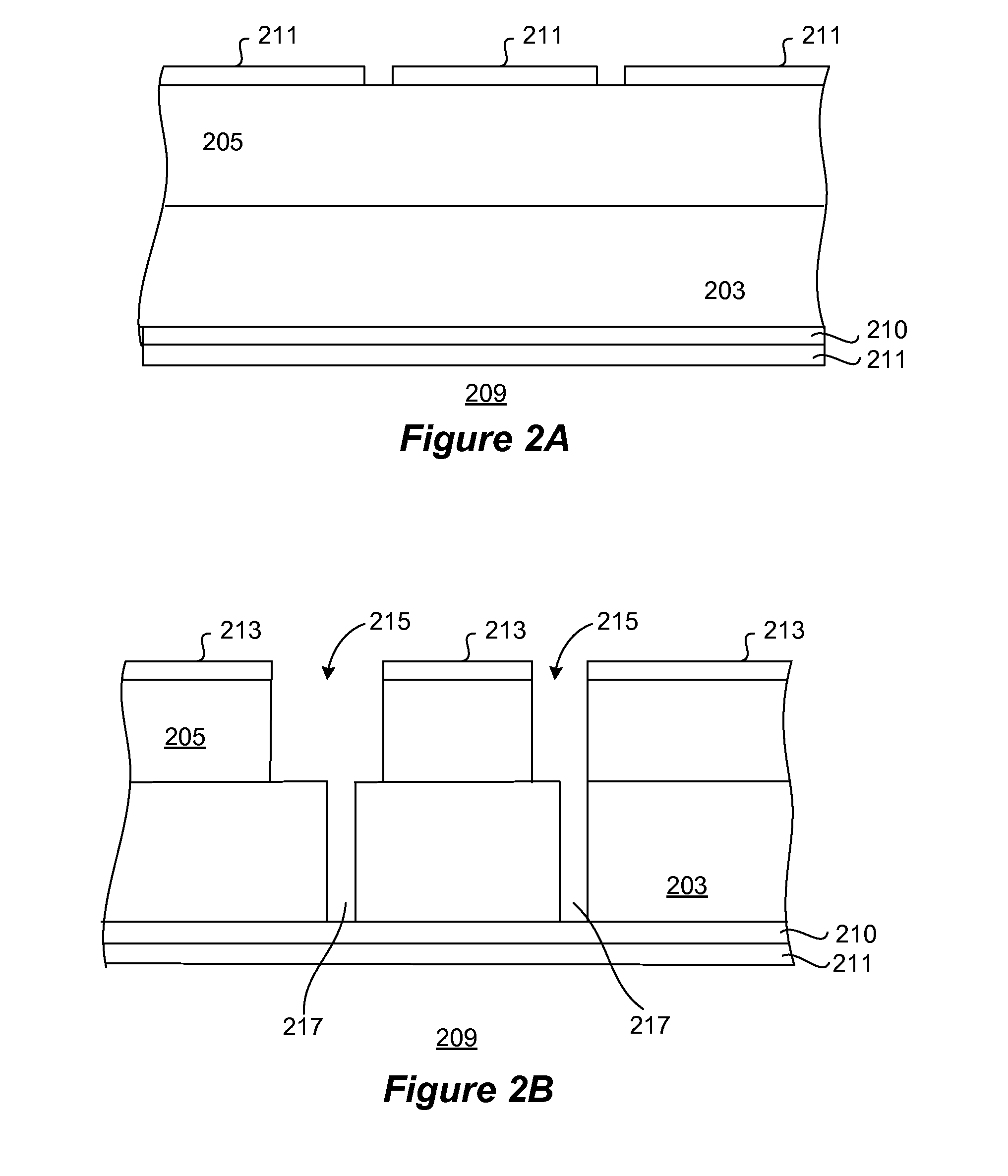Apparatus for UV damage repair of low k films prior to copper barrier deposition
a technology of copper barrier and apparatus, applied in the field of semiconductor processing, can solve the problems of inherently weak nature of low-k dielectric material, significant challenges for downstream electronic-packaging process and material compatibility, host of process integration and material compatibility difficulties, etc., and achieve the effect of reducing the energy of film
- Summary
- Abstract
- Description
- Claims
- Application Information
AI Technical Summary
Benefits of technology
Problems solved by technology
Method used
Image
Examples
Embodiment Construction
[0029]Embodiments of the present invention are described herein in the context of a UV treatment for carbon-containing low-k dielectric repair in damascene processing. Those skilled in the art will realize that the following detailed description of the present invention is illustrative only and is not intended to be in any way limiting. Other embodiments of the present invention will readily suggest themselves to such skilled persons having the benefit of this disclosure. Reference will now be made in detail to implementations of the present invention as illustrated in the accompanying drawings. The same reference indicators will be used throughout the drawings and the following detailed description to refer to the same or like parts.
[0030]The term “semiconductor device” as used herein refers to any device formed on a semiconductor substrate or any device possessing a semiconductor material. In many cases, a semiconductor device participates in electronic logic or memory, or in ener...
PUM
| Property | Measurement | Unit |
|---|---|---|
| wavelength | aaaaa | aaaaa |
| dielectric constant | aaaaa | aaaaa |
| time | aaaaa | aaaaa |
Abstract
Description
Claims
Application Information
 Login to View More
Login to View More - R&D Engineer
- R&D Manager
- IP Professional
- Industry Leading Data Capabilities
- Powerful AI technology
- Patent DNA Extraction
Browse by: Latest US Patents, China's latest patents, Technical Efficacy Thesaurus, Application Domain, Technology Topic, Popular Technical Reports.
© 2024 PatSnap. All rights reserved.Legal|Privacy policy|Modern Slavery Act Transparency Statement|Sitemap|About US| Contact US: help@patsnap.com










